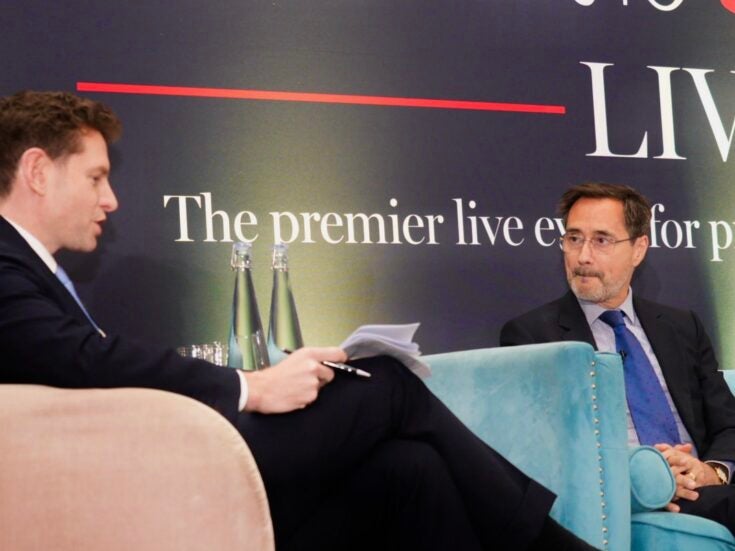Ten years ago, English cricketers were national heroes. But the financial boom that followed has created some very rich villains, on the pitch and off, says Stephen Fay
During the summer of 2005, cricket became the new football. England had beaten Australia in one of the best Ashes contests ever. Five Tests attracted a TV audience of 22.65 million on Channel 4 and made celebrities of Andrew Flintoff and Kevin Pietersen.
After 7 July that summer, when terrorist bombs caused carnage in central London, politicians were anxious about the capital’s reputation and wanted a joyful occasion to show that it remained open for business. That September, cricket was chosen to make the case. The open bus carrying the England team was f’ted by jostling crowds on the streets of London, finally reaching Trafalgar Square via 10 Downing Street.
That year was also fateful because Sky TV had successfully bid for the future television rights to English cricket. This meant the end of terrestrial coverage, and of a mass audience. Cricket’s financial future had been secured, but at a heavy cost. The cricket writer Scyld Berry declared: ‘Removing cricket from terrestrial television was the biggest decision ever made by the ECB [England and Wales Cricket Board]… It might prove to be the primary cause of permanent decline.’ A lovely, leisurely summer game, cricket has been transformed by television into a sector of the entertainment industry.
The sale of TV rights accounts for about 70 per cent of the ECB’s income. The exact figures are confidential, but they raise about ’125 million a year for the ECB, which controls the game in England. However, a comfortable income has been subject to the law of unintended consequences. Cricket is part of a Sky TV package that costs individual subscribers ’630 a year, which is prohibitive for many cricket lovers. Consequently, the audience is falling.
After the euphoria of 2005, counties such as Glamorgan, Durham and Gloucestershire announced that they also wanted to share the crowds and TV exposure. The ECB encouraged them, and they made costly improvements to their grounds. Subsequently, traditional Test venues such as Edgbaston in Birmingham, Headingley in Leeds and Old Trafford in Manchester retaliated by spending freely on ground developments themselves.
But the ECB had stumbled over the law of supply and demand. In the summer of 2015 there are seven Tests (including five Ashes Tests in July and August) and ten one-day internationals. The players complain that this is too many; the Test match grounds say it is not enough; and the ECB cannot schedule more international games. Test match grounds wonder how they can repay long-term debts that have doubled since 2008 to ’206.8 million.
The TV bonanza enabled the ECB to coddle Test cricketers with platoons of coaches, analysts, psychologists and dieticians. The largest item, however, is a distribution of profits to the eighteen counties, half of which are threatened by bankruptcy. That cost ’54.2 million in 2014, a response to the county clubs who argued that that their income had hardly grown in six years; ten of the eighteen do not generate enough profit to cover interest payments; and only five have enough cash to meet their short-term liabilities.
Though the bureaucracy had increased by no less than 50 per cent in a decade, in 2014 the ECB was still able to announce a profit of ’28 million, on a turnover of ’174 million. Profits went into reserves which now amount to a ’70 million plump cushion. Whatever is wrong with English cricket, it is not the ECB’s balance sheet.
What had gone badly wrong is the performance of the over-furnished England Test team. The audience for cricket is sensitive to the performance of the England team, and the humbling 2013/14 Ashes defeat by Australia and a dismal World Cup earlier this year created a downward spiral in the live audience for Test cricket, in club cricket and, of course, in TV viewing figures. ‘Cricket has lost its place in the national conversation,’ says an experienced administrator. A memorable victory over New Zealand at Lord’s was like a swallow but it doesn’t make a summer.
The architect of English cricket’s economic model was an entrepreneur named Giles Clarke, an authoritarian figure with a short temper. Clarke was ECB chairman from 2007 to May 2015, when he took the title of president. During his term, insiders noticed a subtle change in the language used by the ECB. ‘It’s marketing-speak now,’ says a participant. Money talks loudest.
Like most entrepreneurs, Clarke has had his successes and failures. The most extravagant failure was his alliance with a Texan banker named Allen Stanford to establish a rival to the Indian Premier League. This was announced by Stanford’s arrival at Lord’s in a helicopter carrying a plastic crate packed with $20 million prize money in $50 bills for matches between England and a West Indies XI. This charade ended in ignominy when Stanford was convicted of a $7 billion fraud and sentenced to 110 years in jail.
Last year, Clarke was deeply involved, with allies from India and Australia, in a deal to increase their share of the revenues received by the International Cricket Council (ICC) from a new TV contract for international cricket worth $1.9 billion over eight years. Clarke argued that the new deal, which concentrates TV coverage on games involving India, England and Australia, was necessary to prevent the loss of the Indian TV contracts, which are the most valuable of all. The other Test-playing nations, such as South Africa, Pakistan and Sri Lanka, were offered no choice. Details remain secret, but the ECB’s share of the spoils is expected to be at least $90 million, an increase from $30-40 million.
Opponents of the deal regard it as an unprincipled stitch-up. The reaction of Ehsan Mani, a former chairman of the ICC, was to tell the audience at the Wisden dinner in April that India, England and Australia ‘have undermined the integrity and standing of the ICC in promoting their own agenda’. Clarke, a guest at the top table, lost his cool with Mani. He then proceeded to lose his temper with the editor of Wisden Cricketers’ Almanack, Lawrence Booth, who had attacked the ECB’s leadership as ‘a nexus of self-preservation’.
Since May, however, the ECB has been under new management. Clarke’s successor is Colin Graves, founder of the Costcutter chain of convenience stores. A Yorkshireman with strong opinions (he thinks Tests ought to be over in four days, not five — wrong there!), Graves wants to channel more cash to the counties and less to the England squad, and to slim down bloated staff levels at the ECB.
But the major issue is to reverse the decline in the audience and to build a new one. That means getting cricket back on terrestrial TV. The new, short game of T20 — teams play twenty overs each — lasts only three hours and ought to be an ideal medium for TV. The Australians have proved that with their ‘Big Bash’.
The ECB has been trying to interest the commercial channels and the BBC in televising T20 games, but they are struggling. The BBC has declared a total absence of interest in cricket (it prefers Formula One).The commercial companies speak of scheduling difficulties and the steep production costs of televising cricket.
There is, however, a carrot the ECB has not tried. It already subsidises newspaper coverage of county cricket: why not be bolder and offer generous contributions towards a TV company’s production costs? It’s got the money — ’70.039 million, to be precise







